Updated on Nov 3, 2022. Originally written and posted on Feb 1, 2013.
In a Chinese New Year special, DynastyClothingStore.com dives into the seldom-spoken topic of Chinese fighters in MMA. Brace yourselves... this is the longest blog entry we've ever done. It is not for the casual reader. If you call yourself an MMA fan though, we know you've been dying to ask these questions. We've got the answers and the videos.
But if you're too lazy, scroll down all the way to the bottom for the "Too Long, Didn't Read" version, where we sum up this near 7,000-word article in one short paragraph.
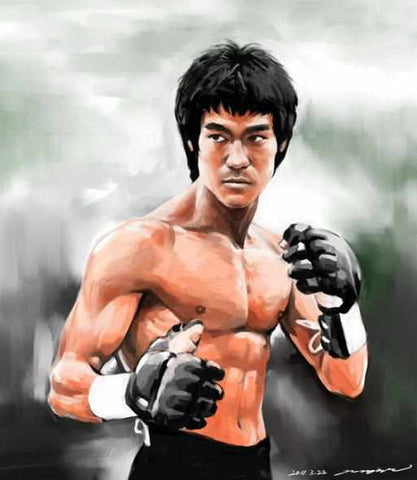
- Strapped in tight? Here we go.
Being the birthplace of Asian martial arts (as the Chinese phrase goes: "all martial arts come from Shaolin" - albeit with influences from India), China (a.k.a. The Middle Kingdom) possesses over five thousand years of history, and is the central origin of all Asian people and culture that can be traced back to the ancient times. While they won't openly admit it, neighbouring nations such as Japan, Korea, and all of South East Asia owe their historical and cultural roots to China, in one way or another.
Why is it then, in a society of more than 2 billion ethnic Chinese people scattered across the globe combined, we have not had any successful Chinese fighters (so far)? Why is it that Japan, a tiny island comprised of only about 125 million people, has produced some of the sport's most legendary MMA fighters, and Korea is taking the lead in pushing the next wave of successful Asian fighters, while China (and its neighbouring Chinese populations in and of Hong Kong, Taiwan, and Macau) is still the odd country out of the party? Why have Chinese fighters failed to find success at prize fighting and what is it that makes Chinese people "different" than other Asian fighters?
We're going to look at the legitimate factors that have contributed to the slow acceptance of MMA in Chinese society, as well as dissecting the potential bullshit "reasons not to train MMA" agenda that Chinese martial arts masters preach. We're about to see how much of it is with good reason, and how much of it is just Chinese people making up excuses and not being good at fighting MMA.

- China Top Team
Factor #1:
Historical & Political Situation Stopped Growth & Development of Martial Arts in modern China
What Happened in China:
Without opening a gigantic textbook on the history of modern China, we'll be as brief as we can. Right after the communist party (Mainland China) drove out the nationalists (Taiwanese) in 1949 to Taiwan after World War II, they banned the right to train martial arts in China for fear of people overthrowing the government, and burned down the Shaolin temples.
What?
That's right. Martial arts, having originated in China, were banned from being practiced for the next thirty (30) years (until 1989 when the government decided to rebuild the Shaolin temple and "lift the ban on martial arts") in the mainland.
What Happened Around The World:
Exact facts and dates aside, we know that this is the same era and time when the Japanese embraced western catch wrestling / professional wrestling in the 60's, 70's, and 80's, and added it to their existing Judo and Japanese Jiu Jitsu. Karate flourished and offshoot hard styles emerged such as Kyokushin Karate, challenging western kickboxing styles. Soon, kickboxing and grappling were combined as "Shooto", derived from "shoot fighting" as pro wrestlers called it (a more realistic version of pro wrestling techniques), and we all knew that turned into MMA in Japan.
-
 Japanese MMA legend Kazushi Sakuraba
Japanese MMA legend Kazushi Sakuraba
Koreans have adapted Taekwondo mainly from Karate during their time from being occupied by the Japanese, as well as Judo, and have become very strong in these martial arts during this time as well. Interestingly, the founder of Kyokushin Karate, Mas Oyama, was ethnic Korean (a.k.a. Choi Young-Eui / Choi Baedal), who went around all of Japan beating every Karate master there was to form what he called "The Ultimate Truth" (Kyokushin), the first and foremost style of full contact karate.
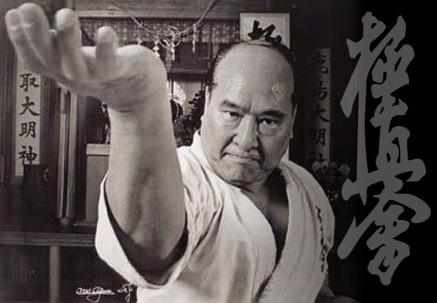
- Mas Oyama fought bulls and invented the 100-Man Kumite.
Mitsuyo Maeda of course brought Judo newaza (ground fighting) to Gastao Gracie, Carlos Gracie, and Helio Gracie in 1914, and the Gracies and other Brazilian families have been developing their Brazilian Jiu Jitsu undisturbed for the better part of a century.
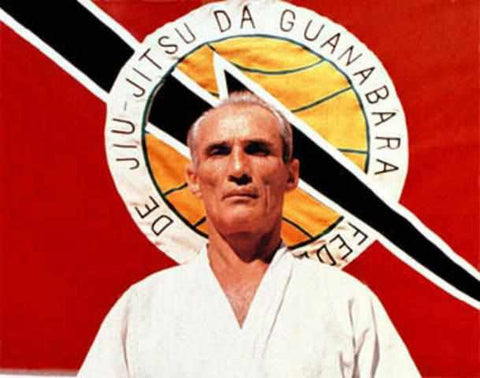
- Founder of Gracie Jiu Jitsu, Helio Gracie
Somewhere in Russia, two dudes (Viktor Spiridonov and Vasili Oshchepkov) who trained Judo in Japan came back home and combined it with wrestling to make Sambo, a hybrid martial art and combat sport defined by its intention to be "a merger of the most effective techniques of other martial arts", and someone named Fedor Emelianenko was born.

- An exception to the rule...
Struggle For Stability & Modernity:
Having been ripped apart, raped, and pillaged by foreign powers during WW1 and WW2 (pretty much every nation you could think of who wanted a piece of China, including but not limited to: Japan, Germany, Italy, Austria-Hungary, United Kingdom, United States, France, Russia, the Dutch, Portugal, etc.), losing Hong Kong to the British, Macau to the Portuguese, and a good chunk of Chinese leaving for Taiwan, the Chinese people as a whole were a social and economical mess.
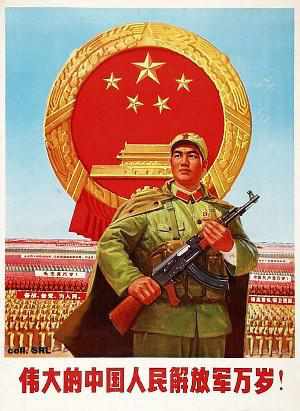
- Propaganda was running wild.
China underwent horrible famines and failed their attempts at modernization without commercialism / capitalism, and basically shut themselves out of any cultural trade or development for half a century - for the interest of protecting itself from foreign influence and control.
Japan on the other hand was embracing change, western technology and teachings, rebuilding after the war, and enjoyed massive growth and development - at the cost of being permanently intertwined with western powers and colonialism.
Chinese people during this time were struggling to pick themselves back up, and simply were not training any martial arts or developing their game because they weren't allowed, or even socially or economically stable to do so.
Turning Martial Arts Into A Performance Art:
Kung Fu practitioners during this time (1949 and onwards) could only mildly train forms to hide their techniques, similar to how Brazilians trained Capoeira as a dance to hide their deadly attacks during times of slavery. This was largely compressed together as "Wushu", an umbrella term / sport combining all Chinese martial arts techniques. Wushu then went on to become more of a performance art / sport, emphasizing forms and athleticism as a showcase of Chinese martial arts rather than competitive sport fighting.
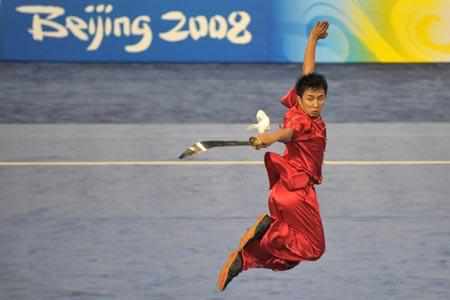
The Need For a Real Combat Sport:
Somewhere along the way in the 1970's, some guy in the Chinese military decided to call bullshit on all this fancy stuff, and combined traditional kung fu fighting styles (Chinese martial arts were categorized into four families: Ti (To Kick), Da (To Hit), Shuai (To Wrestle), Na (To Grapple or Submit), basically Chinese "mixed martial arts") to form a hybrid Chinese art known as Sanda / Sanshou, which means "free fighting".
On one hand, it was a Chinese style of kickboxing combined with wrestling take downs and Judo throws. On the other hand, you could argue that these techniques were all taken from Chinese Martial Arts, such as Shuai Jiao (Chinese Wrestling).
It's distinction that made it "Chinese" was it's leg catching techniques. A Sanda / Sanshou fighter has great awareness of kicks and can catch any incoming kick and trip / take down / dump their opponent. It is now largely known to the world today through former Strikeforce Middleweight Champion and UFC Middleweight Fighter Cung Le who uses this Sanda style as his main style of attack.
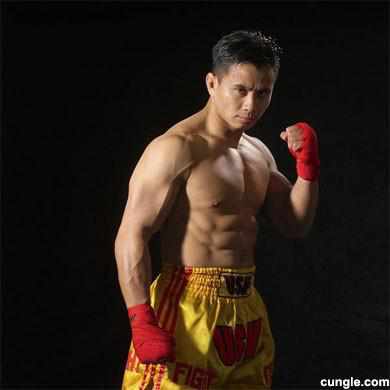
- UFC Fighter and Sanshou world champion Cung Le. Cung Le is Vietnamese, but that fact aside, he's been the only successful fighter so far to make use of a "Chinese" style in MMA.
The "Westernized" Colonies:
Hong Kong (The Pearl of the Orient) and Macau (The Las Vegas of Asia) flourished under British and Portuguese rule, respectively. Many Kung Fu masters including Ip Man (Bruce Lee's teacher) had fled to the shores of Hong Kong to escape the war and Japanese occupation. Yet they were only just cities, not large enough to influence new Chinese martial arts styles to emerge (there is of course Bruce Lee, more on him in a bit) but did refine their existing styles of Wing Chun and Hung Gar through many infamous "rooftop challenge matches" between Kung Fu masters.
We don't know what was going on with Taiwan at this time. Having been under Japanese occupation, one would think they've done something with their martial arts in a free market economy, but all they've managed to do was produce Andy Wang (although the MMA scene in Taiwan has begun to develop in recent years with the addition of Dynasty "Poster Boy" and Taiwanese MMA representative Khai "The Shadow" Wu).
One Anomaly:
There is, of course, the man the myth the legend Bruce Lee. He was the first to get a taste of America, and started doing his thing at this time period.
Traveling to the States because of his street fighting behaviour and getting into trouble with the local Triads and police in Hong Kong, he was planting the seeds to his philosophy that "there is no best style", and propagating the first psychological motions of mixed martial arts fighting.
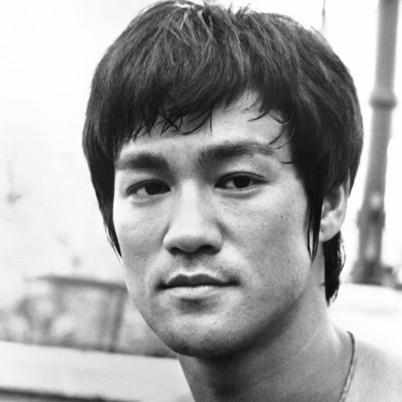
- Bruce Lee just plain didn't give a fuck about what the old masters had to say.
But by the time he returned to Hong Kong, became an overnight superstar and subsequent death, Chinese society had already lagged behind about 20-30 years in their development of modern martial arts.
While Bruce Lee's teachings should have caught on with the Chinese people, it somehow didn't... at least, not in the fashion that we as MMA fans would have hoped for. Tradition still held on tight to many of our martial arts disciplines, and no one came close to pushing the boundaries as much as Bruce Lee did ever since.
Factor #2:
Traditional Martial Arts Thinking, Romanticism, & Believing Into Our Own Bullshit
You see, Chinese people were (and still are) too attached to traditional thinking and culture, especially when it came to traditional Chinese Kung Fu (more on the cultural and economics aspects later).
Bruce Lee himself was attacked by Chinese Kung Fu masters in the States for teaching westerners his Kung Fu / Wing Chun (which ironically, sparked Bruce to abandon Kung Fu and start cross training in Fencing, Boxing, Savate Kickboxing, Judo / Grappling, and Wrestling).
This example alone, demonstrates the stubborn mentality the Chinese people had at the time, unlike the Japanese and other western fighters, who were traveling the world and cross training in different styles to become better martial artists.

- The Chinese version of The Holocaust, The Rape of Nanking, was still fresh in Chinese peoples' minds at the hands of the Japanese.
However, it is fair to note that after the Chinese suffered at the hands of foreign oppression for the better part of a century, this "not sharing with foreigners" mentality is understandably deserved.
Since Chinese Kung Fu masters hung onto their beloved Chinese techniques and traditional thinking, a number of negative consequences happened as a result:
1. Kung Fu Was A Secret... That Nobody Knew
Chinese Kung Fu was too secretly guarded and rarely taught or passed down to anyone, especially not to foreigners. This led to many old masters with esoteric styles not having many students, and the failure of passing on techniques means the death of their style and knowledge, eliminating any hopes of growth and development.
There used to be hundreds of styles of Kung Fu ranging from all four categories of styles as mentioned before (directly influencing the likes of Karate, Jiu Jitsu, Judo, and now Brazilian Jiu Jitsu), but now only a select number remain known and practiced.
The notable ones that remain today are Wushu, Wing Chun / Ving Tsun / Wing Tsun, Choy Li Fut / Choy Lee Fut / Choy Lay Fut, Tai Chi (Taiji), Hung Gar Kuen, Ba Gua Quan (Eight Trigrams Palm), Xing Yi (Shape Intent Fist), Ba Ji (The Eight Extremities Fist), various "internal" styles, and to a much lesser extent, Shuai Jiao (traditional Chinese wrestling, similar to Mongolian wrestling / Judo), and of course Shaolin Kung Fu (a plethora of animal styles such as Crane Fist [Karate], Praying Mantis, Snake Fist, Leopard Fist, Dragon Fist, and more).
2. Self Defense, Not A Sport
Because Chinese martial arts systems are mainly based on self defense and contains no sport fighting elements (as opposed to Karate, Taekwondo, and Judo that have adopted sport / point fighting elements), you are never really able to use it or practice it in a live combat environment.
This type of "closed loop" training contributes to the lack of development, modernization, and refinement of their style of Kung Fu, causing students and masters to continue to (falsely) believe that their style works (even when others have already evolved beyond most of their styles through decades of trial and error, sparring, and refinement).
Lightning fast... but can it do damage?
Out of all the Chinese martial arts, Wing Chun has went from an unknown and obscure woman's style to being the only prominent art (thanks to Ip Man and Bruce Lee) that has held its own in practicality and effectiveness against other styles throughout the years.
Of course, we know the MMA gloves destroy any hope of any Chinese fighter using Wing Chun as a style, although UFC commentator Joe Rogan has commented that he would like to see a fighter use Wing Chun's chain punches from the mount.
Why yes, it can! A real Wing Chun practitioner destroys a Kyokushin Karate guy... but they end up fighting on the ground anyway.
3. False Romanticism
Because Chinese martial arts were losing popularity (due to reason #1), took too long to learn and were too difficult to implement because of the lack of any live sporting element (reason #2), Chinese Kung Fu was regulated to being only a traditional martial art that believed in it's own bullshit, even when it started to get picked apart by other styles in fight competitions.
Kyokushin Karate vs. "Drunken Boxing". Please, stop embarrassing yourselves.
Chinese Kung Fu and martial arts myth and lore were so vast and rich, that many people (all across the globe) loved Kung Fu / Wuxia films, and still do. You can just ask hip-hop super group the Wu-Tang Clan. Front man RZA, engineered the group's sound and persona off of classic Shaw Brothers Kung Fu films that he saw as a kid in the States. RZA now trains under former Shaolin Monk Shifu Shi Yan Ming, who opened up the USA Shaolin Temple in New York.
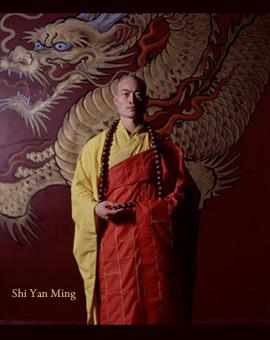
- This clever guy had "The American Dream" and escaped from his touring Monk mates to spread Chinese Shaolin Kung Fu.
Bruce Lee, back in the day, was already implementing the earliest of MMA techniques in his movies... and nobody noticed it because they were always in love with Bruce's "Kung Fu".
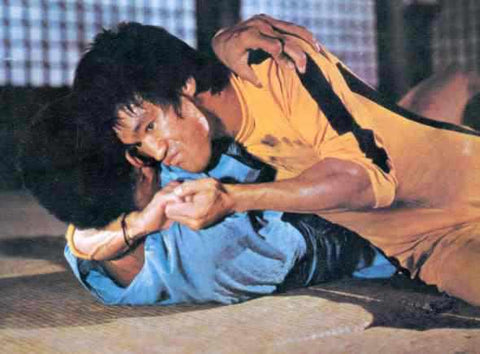
- Grappling headlock from Judo scarfhold / side control!
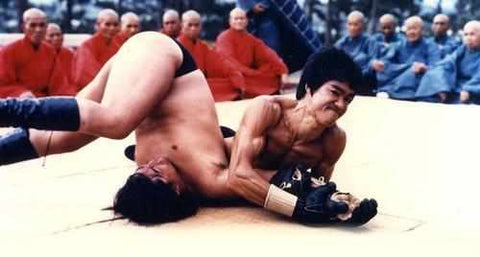
- Bruce actually applies a sloppy, early modified armbar on poor Sammo Hung! With the first set of MMA gloves ever made.
International superstars who followed the footsteps of Bruce Lee such as Jackie Chan, Jet Li, and Donnie Yen, enjoyed many years of success as martial arts / Kung Fu film action stars. Yet ultimately, they were just film actors.
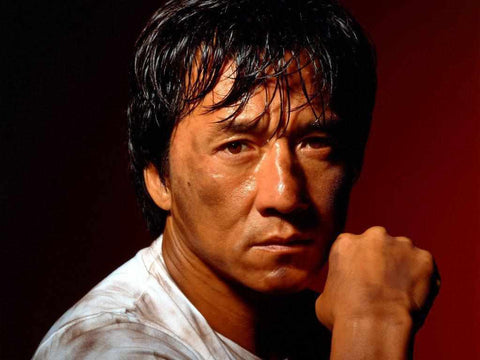
While Jackie Chan was schooled in the Beijing Opera martial arts, his moves are a combination of real Chinese Kung Fu, theatrical stunt work, and clever choreography.

Jet Li, 5x National Wushu Champion of China
Jet Li was a 5-time national Wushu champion and has legit martial arts skills spanning many different Chinese styles such as Shaolin Kung Fu, Long Fist, Taichi Quan, and others. But he was no prize fighter.
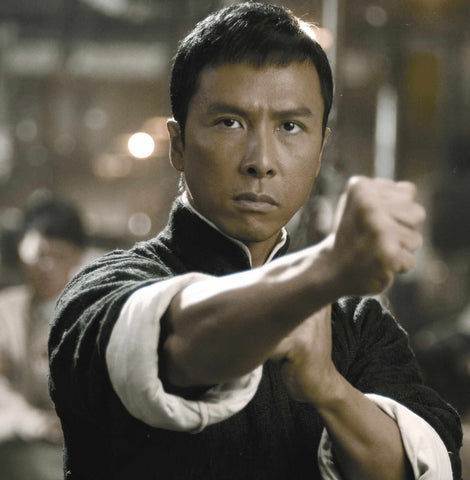
Donnie Yen, perhaps the most "modern" out of all his peers, has many years of legit Chinese martial arts training (under his mother Bow Sim Mark) and cross training in newer styles such as Taekwondo and Boxing, but even he never stepped foot in a ring.
Chinese people seemed to have become attached to their idols and heroes in the entertainment world and embraced this type of romanticism of their martial arts, and forgot that the world outside Chinese martial arts was changing rapidly and leaving them behind.
4. Disbelief, Denial and Excuses
As far as we know, when the foreign fighters challenged real life folk hero Huo Yuan Jia in 1910 (played by Jet Li in "Fearless"), he smoked them all by historical accounts.

But... that was when nobody knew MMA.
5. The Martial Arts "Avoiding Conflict" Paradox
Martial arts, when written in Chinese, "Wushu", can literally be separated and interpreted as "the art of avoiding conflict". Jet Li talked about this in his most important film "Fearless" a.k.a. "Huo Yuan Jia".
Now we could all just go home at this point, because Jet Li is absolutely right about averting conflict, and even he himself admitted in a behind the scenes interview in "Cradle 2 The Grave" that he was no UFC fighter.
But what about some of the other stuff these Chinese masters are saying? They say "MMA is trash", the grappling is "gay", are for thugs, goons, and gangsters who just want to fight, and isn't a martial art. They claim that people who do MMA aren't martial artists and don't understand what is respect, honour, etc.
Let's do a deep dive and see if any of this is true.
These masters could very well be using these claims to make excuses for the fact that they weren't cross training or were too afraid to adapt themselves, fearing they'd fail to do so (trying to save "face" and reputation as a Kung Fu school).
One of the most common "reasons" Chinese martial arts practitioners come up with to defend their style is that Chinese martial arts and people don't train Kung Fu to fight others. They say they train it for health, for self defense, and to kill when attacked, not to bully others and compete in a sport that's only a "game".
Ip Chun explains Martial Arts is for self defense, health, and not for fighting.
There is of course truth to this statement... that is until I saw this:
Of course, this is not representative of all Chinese martial arts. But you have to think, if you trained your entire life in Chinese Kung Fu only to fight like this... you're gonna run into some huge problems.
Self defense is great.
Training for the health benefits are great.
Having to never use your martial arts because you've reached martial arts mastery in the mind and body is also great.
That is what martial arts is about. We understand that and we don't have a problem with that at all.
But here lies the paradox:
If I train in something that I'm not allowed to use, or will never get to use, is there even a point?
Now what if I get provoked and had to use it in a fight?
Sure, I could beat up some other Karate or Taekwondo guys with my Wing Chun Kung Fu... but what about MMA?
(Now, we fully realize that "MMA" itself is not a martial art, but rather a mixture of martial arts, and comparing the two are like apples and oranges and isn't our point, but follow us for a moment here...)
Wing Chun vs Boxing... someone gets knocked out.
...ends with a snap.
If what these masters are saying is true; I cannot train "MMA" and still be a noble martial artist who avoids conflict!?
That sounds like a nice self-fulfilling excuse to not train realistically, pressure test, do live sparring, and fight full contact with your skills.
Martial arts, of course, is about the practitioner, and what he / she does with it, not the martial arts "style" itself.
Just because MMA attracts the douchebag crowd to learn it and fight others... does not mean douchebags weren't training Chinese Kung Fu or Karate decades ago for the same intentions, when it too, was the "cool" thing to do on the block.
This is touching. Ip Chun really is a bad ass martial arts master. He even talks about the evolution of his style of Wing Chun to become a more complete martial art. I have no doubt about this man's knowledge and have all the respect in the world for him.
But let's be honest with ourselves. Kung Fu featured in movies, are just choreographed fights for movies. You can see the stunt double acting as Ip Chun when it's not a close up shot. Any Wing Chun fighter who tries to only use pure Wing Chun would get crushed in combat sports such as MMA, but that's besides the point, as any singular martial arts discipline would get crushed in a mixed rules contest.
The point is - other styles such as Karate and Taekwondo have done their homework and decided to evolve with the times... which produced sport Karate, Kyokushin Karate, and full contact Taekwondo.
Kung Fu on the other hand, loves to hold onto tradition, yet does not want to admit they need to also turn their styles into combat sports such as Sanda / Sanshou, or perhaps a bareknuckle version of it such as Guoshu Lei Tai, where you can mix strikes with Shuai Jiao takedowns.
To be fair, we aren't bashing Chinese martial arts.
We aren't even bashing traditional martial arts.
They are the father of all Asian martial arts and should be respected. If you learn something useful, are able to defend yourself, and aren't looking to fight or compete, then all the power to you.
Kung Fu, especially Wing Chun, is pretty awesome when done right. MMA is just a sport with rules anyway, not allowing bare knuckle punches, eye gouging and groin strikes, right?
But that's not what this is about. We know traditional martial arts are powerful, and we understand MMA is just a sport with rules.
Just look at Lyoto Machida who successfully used Karate in MMA, which was thought to not work before he became a champion.
Anthony Pettis, Benson Henderson, and Anderson Silva are all Taekwondo black belts, all successful in MMA.
What we're trying to find out is why Chinese people have not embraced MMA and failed to adapt their techniques for MMA (Sanda being the only exception, and perhaps it's solution).
It has come to our attention that their stubbornness to adapt has been one of the key contributing factors to the lack of success of Chinese fighters.
Bryan To, a Hong Kong kickboxing champion, makes his MMA debut. For the love of Buddha, please learn the ground game first before you step into an MMA fight, you're embarrassing yourself and your entire country.
Okay, so martial arts were banned in China for three decades and their country was in turmoil for basically a whole century. Yet you're not fully convinced. Neither are we. If Chinese fighters are so successful in the Sanda / Sanshou arena, they should have the same drive to learn the ground game and kick ass in MMA, right?
Well it turns out it isn't as simple as that. Let's dive deeper into Chinese society and psychology and see what pushes these Chinese youth away from pursuing combat sports in the first place...
Factor #3:
Traditional Chinese Culture, Society, and Teachings Kill The Pursuit of Sports & Fighting
As if the aforementioned five reasons of Chinese martial arts culture weren't enough to slow, if not stop, Chinese youth from cross training and becoming great fighters, there's a whole boatload of cultural factors as well. Where do we even start?
Let's categorize it like this: Money, Sports, Family, Society, and Psychology.
6. Chinese Culture Is All About Money
You should be well aware of this stereotype by now. The overprotective, strict, control freak Asian parents. The "Tiger Mom"s. The smart Asian kid who gets perfect grades. "Too Asian", too many Asians taking over universities all across north America. The yellow peril who came to America to steal all our jobs.

- I'm Rich Biatch!!!
When they say "Asian", what they really mean is "Chinese". This is not a jab at Koreans or Japanese or other Asians. All Asian parents are equally strict, but there are slight differences.
As far as we know, Chinese culture is the only one that literally revolves around money.
Who else gives out lucky red pocket (lai see / hong bao) money every Chinese New Years?
There's Christmas and the exchange of gifts... but that's not the same thing as giving away straight cash... and what makes money again?
Sure as hell not fighting.
Ask any Asian. Which subject / occupation did their parents want them to study, and who are they now? They were probably involved in one of the following fields:
1. Doctor / Dentist / Health / Medicine
2. Scientist / Engineer
3. Finance / Law / Accounting
4. Business / Entrepreneur / Real Estate
5. IT / Computers
If you tried to study anything else... you were a loser. Abandoned. Kicked out. Neglected, unloved child. Disowned. Or maybe you were semi-supported, but were still forced to go to university, even though that you knew you would benefit much more from a hands-on college program.
Many Asian kids are forced to study what their parents told them to study, but end up doing what they want to do anyways, often (again) a few years behind their peers who started before them. If you failed at it, you'd be constantly teased by your parents, comparing you to other Chinese parents and how successful "their" kids were.
This is a very Chinese problem that is unique to Chinese people and culture. Choosing to become a fighter? Damn near unfathomable.
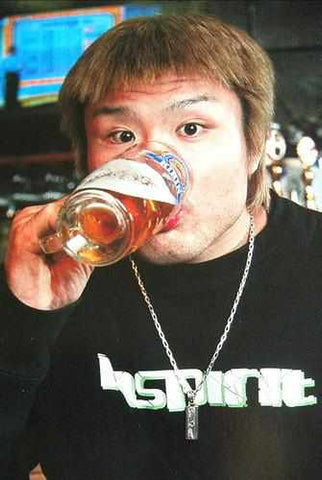
Slightly Off-Topic: Similarly in Japanese culture, if you did something shameful or brought shame to the family, you would never be forgiven. This is why there is such a high suicide rate in Japan because they have trouble dealing with forgiveness and redemption. Takanori Gomi himself was disowned by his father when he told him he wanted to pursue fighting. His last name Gomi means "trash", and wasn't even his real last name.
7. Sports Were Never A Priority
Sports and athletics? Now that's completely out of the question. Asians don't support their kids in athletic programs. With the exception of the Chinese government hand picking babies to train for gold medals in the Olympics, they just don't have competent sports programs. Developing children to fight MMA? They don't give a crap about that. Parents often make their kids take piano and violin lessons, or kids martial arts lessons, but that's about it.

- We need Yellow Pride, holmes.
In contrast, American schools and colleges have all the amateur wrestling programs in place. American families encourage their kids to wrestle in elementary school, high school, and college, and to take part in extra curricular activities all the time, producing many more high level athletes and mixed martial arts fighters (wrestling is arguably the most important base martial art to have for MMA as more than half of UFC's champions all know and use wrestling).
8. Family Values
Chinese people are taught to work together and value your family. You listen to your family. You don't go out and reach out to achieve your own destiny. You usually took up the family business or listened to your parents by working an occupation of their choice, not yours.

- I just made 250k this year. Fighting? I think I'll take a vacation instead.
Whereas westerners or "white" folks kick their kids out after high school and force them to move out and create their own lives, Chinese families all live together, sometimes packed with up to three generations' (grandfather / grandmother, father / mother, sons / daughters) worth of family members under one roof.
Chinese kids are taught to be filial. If you cared about your family and listened to them, you sure as hell wouldn't defy them to become a mixed martial arts fighter.
9. Asian Society Doesn't Understand Fighting, Thinks It's Only For Gangsters and Thugs
Traditional Asian / Chinese thinking praises martial arts and Kung Fu... but competing in a combat sport like kickboxing or Muay Thai?
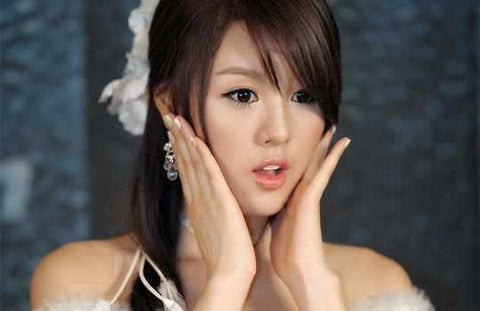
- That is barbaric!
No way.
In Chinese society, they think that only thugs and Triad gangsters train and fight kickboxing. Fighting is seen as something "ugly", or something only kids who are failures / dropped out of school / gangsters would do.
"Good kids" practice Wing Chun... or Tai Chi. Or play the piano and violin...
Chinese parents are too protective of their kids to allow them to ever compete professionally, and in the rare occasions that they do let them, more often than not they're westernized, don't support their kid's decision, or under the government's pressure to send them off to an Olympic training facility for the rest of that poor kid's life.
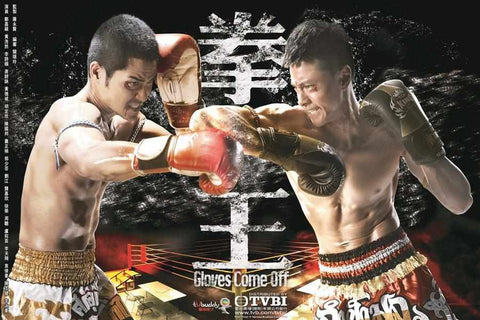
Most recently this type of thinking has started to change, due to... you guessed it, Chinese people making movies about Muay Thai / kickboxing! Now parents are more understanding of combat sports and how they build friendships and skills. But we still have a long way to go.
10. History Proves Chinese Used Their Brains To Fight, Not Their Fists
The Chinese invented at least 7 revolutionary things including paper, printing, gun powder / bombs, early irrigation techniques, compass, the repeating crossbow (the sub machine gun of their times), the "rocket launcher" that launched a salvo of arrows (the wasp as they call it), amongst many other amazing things too long to list here.
The Chinese were the first to really sail the seas with gigantic fleets (explorer Zheng He), reaching Africa and North America more than 100 years earlier than Christopher Columbus ever did, but instead of committing mass genocide against the native Indians and forcing unwilling populations to conform to their religion, they instead returned to China (because China had everything anyways) after trading with foreigners peacefully.
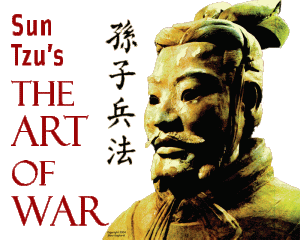
Chinese people used their brains, as they were not nomadic giants like the Mongolians were. They were not barbarians, but were artists, craftsmen, military strategists, writers, scholars, as well as warriors.
Surely you would have heard of The Art of War by Sun Tzu by now. That's just one example, albeit the most famous one, in western society.
Chinese people's way of fighting was to win without fighting. Plus, during times of war, you fought with military weapons and tools anyway, rarely would you fight one on one in barehanded contests.
The Mongols were much better at this than anyone else, having grown up in an environment with wrestling, horseback riding, and archery ingrained in their culture and thus practiced frequently at an early age. That is why they took over most of the known world at one point under the leadership of Genghis Khan (Temujin).
11. Warrior's Mentality
The Chinese didn't really have a warrior class because they didn't really favour one. If you were good at fighting you would go enlist as a military officer or trainer. If you studied hard and were smart you get to take an exam and become an officer or someone that had much higher pay and respect in Chinese society.
Greeks had their "philosophers and boy lovers", but also the Spartans as warriors. The Japanese, similar to the British, had to create their army and infuse them with the warrior's mentality because they both came from a tiny island with nothing on it. The Japanese had to unite the samurai class with their modern army, and the English had to form the United Kingdom. They both needed to conquer other lands for resources to expand or else they would perish. Having a fiery need for conquest will produce great armies with an indomitable fighting spirit.
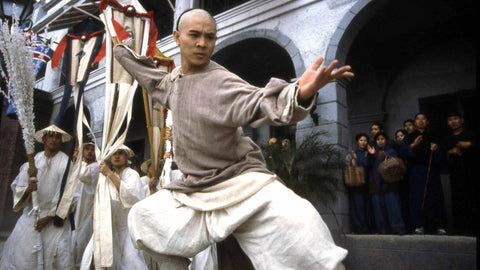
If you want to learn all about this period of Chinese history, watch Jet Li in the Once Upon A Time in China films. He plays real life folk hero Wong Fei Hung and fights the foreign powers who are invading China and tearing his country apart. Jet Li is loved by the Chinese people for a reason, folks.
Chinese people didn't have this mentality to go to war and take over other people's lands because they never needed it. China had all the massive land and resources you could ever want, and that's why the rest of the world came to China in the 18th and 19th centuries to trade with, and subsequently invade China. Back then, it wasn't the Americans screaming at foreign immigrants to get out of their land, it was the Chinese screaming at invading foreigners to get out of China!
In addition to that, the Chinese were too busy fighting amongst each other (for thousands of years). China is a huge place, with over 50 ethnic Chinese groups wandering around the Middle Kingdom. Chinese had the Han and Manchurians as the brains, who ruled for centuries long, but the closest thing to a warrior class related to the Chinese region were the Mongolians. Shaolin Monks and the Jin Yi Wei (Brocade Guard, the Ming Dynasty Emperor's personal elite assassination squad) don't really count, as the Shaolin Monks are well, monks, and the Jin Yi Wei were a small covert group that carried out their missions in secret.
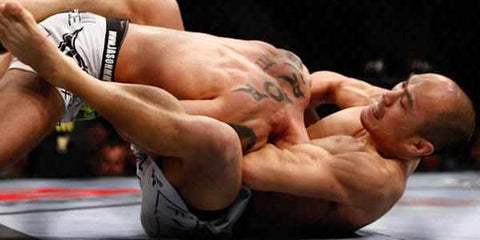
- Mongolian blood! Coincidence? We think not.
Mongolians were the strongest fighters and conquerors in the Middle Kingdom and took over most of the known world at one point, using their superior archery (the sniper rifle of their time), horseback riding and fighting skills, their Mongolian wrestling, and their strength from eating horse meat, sheep meat, and nomadic culture.
It is no surprise then, that the only Chinese fighter who has made it into the UFC (at the time of this writing) is none other than an ethnic Mongolian, Tiequan Zhang (who happens to be a national Mongolian wrestling champion... surprise surprise).
Factor #4:
Diet / Physiques, Rules of the Sport, Jet Lag, and Weight Cutting
Chinese people have been held back by history, loved their Kung Fu too much, won't admit they needed a grappling / ground game and are too stubborn to learn it, and Chinese society, parents, and family don't care and aren't supportive of them choosing the path to be a professional athlete. Those are a lot of negative elements going on already, but in case you still weren't convinced, here are the final set of reasons.
12. Diet / Physiques
Most southern and Han Chinese are at a physical disadvantage. This is just fact, they aren't a huge people. Most weigh around the 100lb. to 150lb. range, being 5'3 to 5'8 in height on average.
We can partially use history as a reasoning for this - most Chinese have come out of famine and poverty only a generation ago from the events of WW2.
Northern Chinese fare better, have diets that promote more muscle growth and are taller, and have better physical attributes. But relatively speaking, they are also poorer, and probably don't even know what MMA is yet.
The Mongolians to the far north actually have the highest chances of doing well in MMA, as they grow up in a warrior culture that forces them to wrestle and farm everyday since they were boys, making them strong, durable, and grappling-centric from the very start.
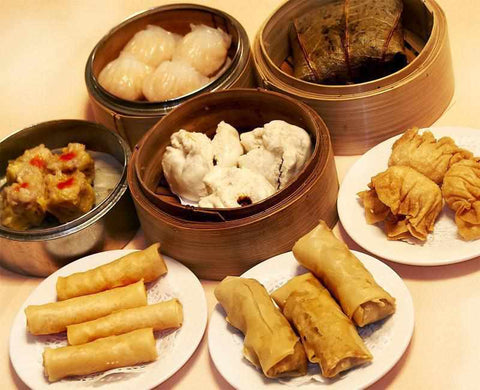
- Nutritionally speaking, Dim Sum doesn't give you much.
The Japanese are around the same size as the Chinese, but Koreans are significantly larger and stronger because of their Mongolian blood / roots and their protein heavy diet. The Japanese eat a lot of raw fish, and a balanced amount of carbs and proteins. The Koreans are protein and vegetable heavy, eating more like Europeans.
Now what do the Chinese eat? Pretty much a lot of carbs. Rice, buns, bread, noodles, mixed with greasy meats and veggies, and a lot of oily appetizers and snacks. They are neither protein heavy or vegetable heavy.
If you make a general comparison, Asians who grow up overseas in western countries, are reasonably taller and larger than their brethren back home. They eat what western people eat, and that is a lot more protein and calcium (remember milk and cheese are not traditionally consumed by Asians).
They also are less cramped, live in sparser populated areas, live in a larger room or house, and have physical space to grow.
This may sound silly to some, but to give you an example; Hong Kong, a city that resembles a tiny dot on the world map, is inhabited by 8 million people.
Wow, you're really cute. But that won't hurt a fly.
13. Rules of the Sport
It took us this far... and if you're still reading this, you would probably know this one already. It's a topic that's been done to death, but the UFC, and the Unified Rules of Mixed Martial Arts pretty much favours wrestlers, and there isn't a huge wrestling culture in many countries outside of the USA or in places like Mongolia / Inner Mongolia, or the Caucasus regions like Dagestan, Russia.
Let's take a more in-depth look at the unified MMA rules and for argument's sake, list every factor that may make strikers / Asian martial arts styles less effective in MMA:
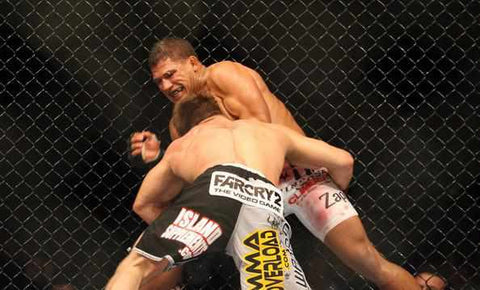
- Can't stop the takedown!
Athletic commissions and referees score and favour takedowns much more heavily than strikes or submissions. A wrestler can take someone down, hold them there, not inflict any damage and still stall out a "win", because it is scored as "dominant".
By this logic, a BJJ practitioner should get points for regaining guard, advancing positions, and submission attempts, even if they don't damage the opponent or finish the fight.
By this logic then, Kung Fu guys should get points for how many times they choose NOT to poke someone's eyes out from top or bottom guard, or hit them in the throat, thereby brutally killing a man! Of course we know this is not the case and we're being a little silly, but it makes you think just "why?" takedowns / stalling without damage are scored?

- A legal kick, by the way, because the moment he throws it Jones stands up. Now only if it landed...
During the takedown, you're not allowed to kick or knee the opponent if they are already touching the ground with more than two of their limbs. What? Isn't this martial arts fighting? That's pretty bogus.
Instead of Wing Chun / Oblique front kicking the guy in the face for crawling towards you ala Jon Jones style, you're forced to "wrestle" with your opponent and develop takedown defense, instead of upkicking them in the face from open guard or elbowing the back of their skull during their shot.
Furthermore, if you're in the clinch and wish to knee the guy in the face, if he drops one of his hands to the ground, you're not allowed to knee him in the head, only the body.
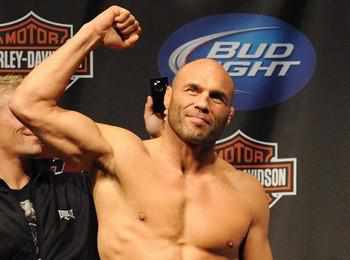
Randy Couture - the Master of the Wall 'n Stall
Almost all MMA fights nowadays take place in a cage. A cage helps wrestlers push an opponent into the wall and grab their legs out from under them. You're not allowed to hit the back of the head, which means again, when you're being pinned against the cage, you can't smash their head / neck in.
You can't punish a failed takedown when you sprawl because you cannot drop knees to the head.
Elbows are allowed on the ground, and theoretically a wrestler has more chances to be on top of his opponent which means he can really utilize these elbow strikes, but on the other hand the fighter on the bottom is not "allowed" to upkick the opponent's face when they are down... and just which technique is more dangerous? The elbows coming down with the added force of gravity that can cut open a man's face, of course.
Back in PRIDE, a Japanese run organization, things were very different. Referees scored submissions and ground fighting more than takedowns that led to nothing, spelling the doom for most wrestlers with a lay and pray strategy (yellow cards were also issued for lay and prayers and inaction). You could also drop knees on a downed opponent or soccer kick them, meaning you would get punished for a failed takedown. Fights took place in a ring, where the ropes negated wrestlers pressuring an opponent against them, but had four corners that allowed strikers to back their opponent up to eat punches and kicks all night.
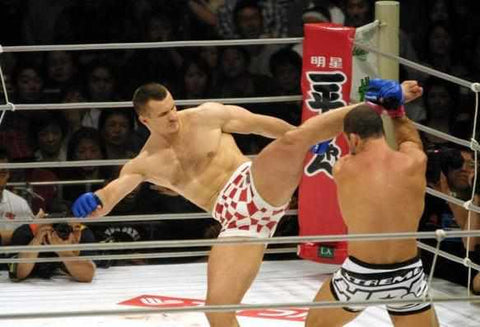
- Mirko Cro Cop was the most feared striker in MMA at one point. He had great sprawl and brawl, but the ring also helped.
The sport has changed now, and if you wanted to make it to the big stage, you needed to learn how to fight inside a cage and know how to wrestle (to some degree). This doesn't help with Chinese fighters who have the most difficulty adapting to grappling out of all other Asians.
14. Jet Lag
In interviews conducted with former PRIDE fighters and MMA veterans, with proof from scientific articles, it is a widely accepted conclusion that when you fly west (therefore heading East to places in East Asia), there is little to no jet lag, whereas when you fly east (heading back to the Western hemisphere), huge jet lag occurs. It is a bit of a scientific phenomenon, something we will not attempt to go into detail here.
More often than not Asian fighters have to fly 16+ hours to come fight in the United States, and one can see how this can greatly hamper their performance.

- Dong Hyun Kim, a vocal advocator of having fairer fighting conditions for Asian fighters.
15. Weight Cutting
For one reason or another, Asians don't cut weight. We're not sure if it's because they don't know how to do it, or if they're too "macho" and believe that you should fight at your "walking around" weight.
In any case, the reality is that professional fighting has now become about your skill level and how much weight you can cut as well. You might've been able to get away with it 10 years ago, but now you have monsters that make 155lbs. and weigh 200lbs. on fight night. Just ask Caol Uno when he got clobbered by Gleison Tibau.
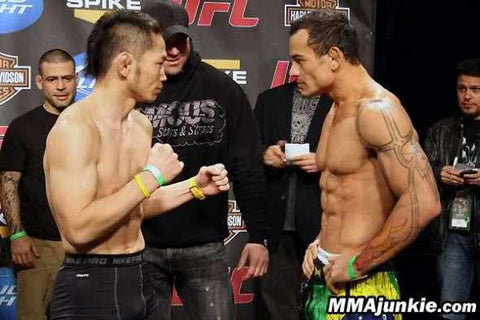
- Poor Caol Uno got smashed because his opponent was actually about 200lbs.
Conclusion: The Future of Chinese MMA?
As far as we know, there are a few MMA gyms popping up in major cities in China, Hong Kong, Macau, and Taiwan now.
In terms of the talent they have produced so far, we now thankfully have China's first UFC Champion in Zhang Weili.

Zhang Weili's coaches are an effective mix of Shuai Jiao wrestling, Sanda / Sanshou Kickboxing, Muay Thai kickboxing, and Brazilian Jiu-Jitsu.

Not far behind is Yan Xiaonan, also a UFC Fighter and contender.
However, in order to become truly successful in combat sports / MMA, we still require the training and coaching of MMA gyms and camps in the United States, Singapore, and in Thailand, as typically that is where the best training is.

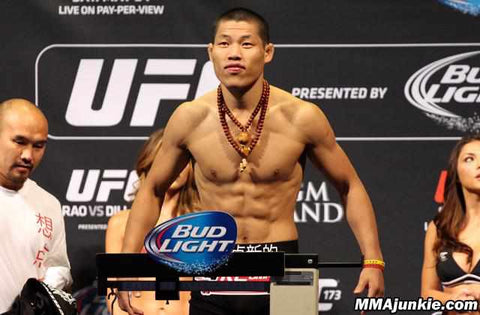
Li Jingliang, a former champion in Legend FC, is the active male Chinese fighter in the UFC with the most wins on his record. Big respect.

Song Yadong is a UFC Bantamweight fighter who trains out of Team Alpha Male MMA and a legitimate prospect / contender to watch out for.
If you are Chinese and you are reading this, are you part of the statistic that is too afraid, too lazy, or too unmotivated to train MMA? Or are you man enough to step up to the challenge? Better late than never, my brethren!

Too Long, Didn't Read:
Chinese people need to break away from their beloved tradition that has prevented them from fully embracing MMA.
They must open their minds, adapt foreign training methods into their curriculum and train in modern martial arts (wrestling, grappling) in order to succeed in MMA.
Then, finally, they may begin to use what is unique to Chinese Kung Fu, and adapt them to MMA to truly create a modern Chinese style suitable for MMA (such as Sanda / Sanshou, Shuai Jiao [Chinese Wrestling]) that will grant them a unique competitive edge.
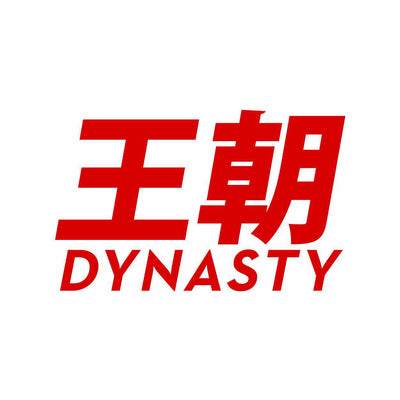



 Japanese MMA legend Kazushi Sakuraba
Japanese MMA legend Kazushi Sakuraba









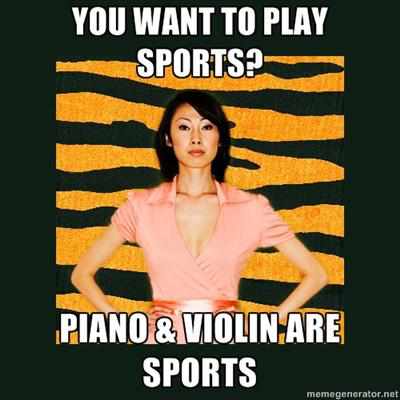











Comments
Load of crap. Everyone is free to fight in any style he or she wants.
Google “neurological damage and mental issues in MMA”.
Then reread this article and rethink it all over….
I read all of it. you guys are incredible. that was a world history lesson as well as a lesson on martial arts history and gave me a better understanding of Chinese culture. thank you
Dynasty MMA is the beacon of light that China, Taiwan, and the whole entire world needs. Thank you for this outstanding article and for what you do, and keep up the good work!
PS: Shuai Jiao and Sanda (with something that you, someone who is familiar with both Shuai Jiao and Sanda probably already know being that Sanda is a hybrid Chinese martial art containing techniques from Shuai Jiao) are great and real Chinese martial arts which, and I’m sorry for my repetition: are real martial arts as opposed to performance arts, but sadly; they (Shuai Jiao and Sanda) are nowhere as widely known as I would argue they should and deserve to be (I’ve noticed some people saying that “all Chinese martial arts are ineffective,” “all Chinese martial arts are fake,” and that they are all “therefore not used in MMA” when Shuai Jiao and Sanda exist, and the techniques from Shuai Jiao, Sanda, and even Jeet Kun Do [JKD] are used in MMA all the time, but oh well; those people those aforementioned people just probably don’t even know that Shuai Jiao and Sanda even exist), and Sanda is often accused of “not even being Chinese,” but that’s a topic which Dynasty MMA covered in another article they wrote titled “Sanda: When Kung Fu created a solution to its problems – then threw it away” (link: https://www.dynastyclothingstore.com/blogs/editorial/sanda-when-kung-fu-created-a-solution-to-its-problems-then-threw-it-away),
and above all: cross-training is especially important and of the essence, as it’s what lead to the creation and upbringing of Sanda in the first place, and even with Sanda: cross-training is still necessary due to the fact that it (Sanda) lacks ground fighting techniques, but hey: cross training is exactly what Bruce Lee did to create his hybrid martial art (Jeet Kune Do), it was the upbringing of MMA as a sport and, yet again; Sanda as a martial art, it’s what makes martial arts effective in the first place, and it’s exactly what’s needed, but often lacking in most CMA (due to the cultural implications outlined in this Dynasty MMA article). Hopefully, we’ll see more of it soon though.
Sorry if this comment I wrote came off as retarded to anyone, but on a final note, I’d like to make non-martial arts related suggestion on the design of Dynasty MMA’s website; Dear Dynasty MMA: your website is great, but it would be even better if the date (day, month, and year) comments are posted could be labeled (as they don’t seem to be; making it confusing, and difficult to interpret when each comment was written). Sorry if that is a dumb suggestion that is asking for too much, and thank you again.
Bravo!
I personally believe that it is possible to maintain tradition while adopting practical combat purposes and modern training. I just think it comes down to balancing it out
I have been in several fights that ended with injury to both parties, on 2 occasions serious injury to my opponent. I’ve trained in MMA & I’ve trained in traditional martial arts, 5 years of karate & over 10 years of xinyiquan + taijiquan. The obvious difference between MMA & “real” martial arts in my experience is that MMA isn’t practical for fighting in real world conditions, unless you’re one on one & don’t have to worry about going to the ground. True traditional martial arts teach how to incapacitate with extreme prejudice, or, my most trained skill; how to kill. This is why I avoid conflict. Unless someone has the intent to kill me or someone I am responsible for, I will not engage in a fight. MMA doesn’t train killing intent or even killing blows, discounting lucky blows or repetitive bludgeoning (referee always stops this so players are used to being stopped)
Just my 2 cents.